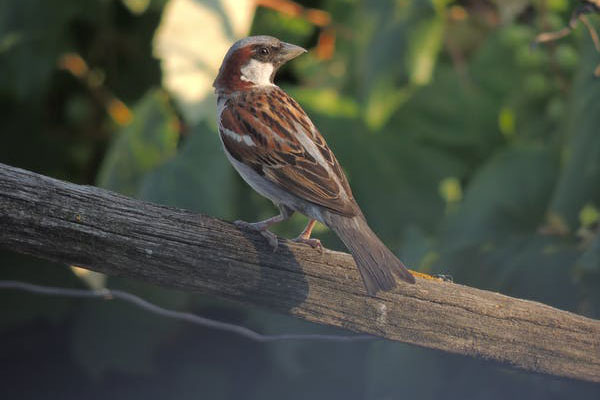The house sparrow (Passer domesticus) is a bird of the sparrow family Passeridae, found in most parts of the world. It is a small bird that has a typical length of 16 cm (6.3 in) and a mass of 24–39.5 g (0.85–1.39 oz). Females and young birds are coloured pale brown and grey, and males have brighter black, white, and brown markings
In mass, the house sparrow ranges from 24 to 39.5 g (0.85 to 1.39 oz). Females usually are slightly smaller than males. The median mass on the European continent for both sexes is about 30 g (1.1 oz), and in more southerly subspecies is around 26 g (0.92 oz). Younger birds are smaller, males are larger during the winter, and females are larger during the breeding season. Birds at higher latitudes, colder climates, and sometimes higher altitudes are larger (under Bergmann's rule), both between and within subspecies.
Some variation is seen in the 12 subspecies of house sparrows, which are divided into two groups, the Oriental P. d. indicus group, and the Palaearctic P. d. domesticus group. Birds of the P. d. domesticus group have grey cheeks, while P. d. indicus group birds have white cheeks, as well as bright colouration on the crown, a smaller bill, and a longer black bib. The subspecies P. d. tingitanus differs little from the nominate subspecies, except in the worn breeding plumage of the male, in which the head is speckled with black and underparts are paler. P. d. balearoibericus is slightly paler than the nominate, but darker than P. d. bibilicus. P. d. bibilicus is paler than most subspecies, but has the grey cheeks of P. d. domesticus group birds. The similar P. d. persicus is paler and smaller, and P. d. niloticus is nearly identical but smaller. Of the less widespread P. d. indicus group subspecies, P. d. hyrcanus is larger than P. d. indicus, P. d. hufufae is paler, P. d. bactrianus is larger and paler, and P. d. parkini is larger and darker with more black on the breast than any other subspecies.
The house sparrow can be confused with a number of other seed-eating birds, especially its relatives in the genus Passer. Many of these relatives are smaller, with an appearance that is neater or "cuter", as with the Dead Sea sparrow. The dull-coloured female can often not be distinguished from other females, and is nearly identical to those of the Spanish and Italian sparrows. The Eurasian tree sparrow is smaller and slenderer with a chestnut crown and a black patch on each cheek. The male Spanish sparrow and Italian sparrow are distinguished by their chestnut crowns. The Sind sparrow is very similar but smaller, with less black on the male's throat and a distinct pale supercilium on the female.
